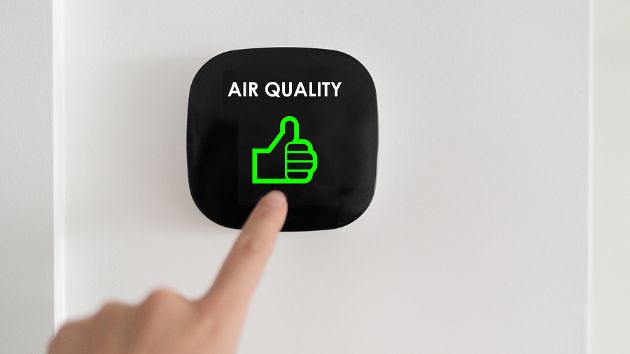
Simply Cooling, Heating & Plumbing is dedicated to improving indoor air quality in Las Vegas, NV. Indoor air quality is crucial for maintaining a healthy living environment, particularly in an area with various environmental challenges such as Las Vegas. Our team offers comprehensive services designed to optimize the air quality within your home, ensuring a safer and more comfortable living space for you and your family.
Understanding Indoor Air Quality & Its Importance
Indoor air quality (IAQ) refers to the condition of the air inside buildings and structures, especially as it relates to the health and comfort of the occupants. Poor IAQ can lead to a variety of health issues, including respiratory problems, allergies, and even chronic diseases. Understanding the significance of IAQ and taking measures to improve it can result in a healthier, more comfortable living environment.
- Biological Contaminants Like Mold, Pollen, & Bacteria
- Chemicals From Household Cleaning Products
- Gases Such As Radon & Carbon Monoxide
- Particles From Tobacco Smoke
Common Sources Of Indoor Air Pollution
Several sources can contribute to poor indoor air quality. Mitigating these sources requires a multi-faceted approach, including improved ventilation and the use of air purifiers.
- Household Cleaners & Disinfectants Which Release Volatile Organic Compounds (Vocs)
- Construction Materials, Including Paints & Varnishes
- Outdoor Pollutants That Find Their Way Indoors
- Poor Ventilation Systems That Fail To Filter & Circulate Air Properly
Advanced Air Filtration Systems
One effective method for improving indoor air quality is the installation of advanced air filtration systems. Our advanced filtration options include High-Efficiency Particulate Air (HEPA) filters and activated carbon filters, both of which are highly effective in improving IAQ.
- Remove Particles As Small As 0.3 Microns
- Reduce Allergens & Asthma Triggers
- Eliminate Odors & Harmful Chemicals
Benefits Of Regular HVAC Maintenance
Regular maintenance of your HVAC system is essential for maintaining good indoor air quality. Our team at offers comprehensive maintenance packages tailored to suit your specific needs.
- Enhanced System Efficiency, Reducing Energy Consumption And Costs
- Prolonged Equipment Lifespan
- Removal Of Dust, Mold, And Other Debris From Air Ducts
- Improved Overall Air Quality
Dehumidification & Humidification Solutions
Maintaining optimal humidity levels is essential for good indoor air quality. Too much humidity can lead to mold growth, while too little can cause respiratory discomfort and dry skin. By adjusting home humidity levels, you can significantly enhance your indoor air quality.
- Balanced Indoor Humidity Levels
- Reduced Mold & Mildew Growth Risk
- Increased Comfort By Preventing Excessively Dry Or Damp Conditions
Eco-Friendly Solutions For Improved Indoor Air Quality
Incorporating eco-friendly solutions into your IAQ strategy helps reduce your carbon footprint while providing clean air. Our commitment to eco-friendly practices ensures that we deliver solutions beneficial for both your health and the environment.
- Using Air Purifiers With Low Energy Consumption
- Choosing Environmentally Safe Cleaning Products
- Installing Energy-efficient HVAC Systems
- Utilizing Natural Ventilation Whenever Possible
Monitoring Indoor Air Quality
Regular monitoring of indoor air quality is crucial for ensuring a healthy living environment. By continuously monitoring IAQ, you can take immediate action to address any issues and maintain a clean, healthy home.
- Track Pollutant Levels In Real-time
- Provide Alerts When Air Quality Deteriorates
- Assist In Identifying Sources Of Pollution
Why Las Vegas Homeowners Should Pay Attention To IAQ
Given the unique environmental conditions in Las Vegas, including high temperatures and dry air, special attention to IAQ is necessary. Indoor air can become stale and polluted quickly addressing these factors with targeted IAQ improvements can help you enjoy a healthier living environment.
- Lack Of Adequate Ventilation
- Increased Use Of Air Conditioning Systems
- Dry Desert Dust Permeating Indoor Spaces
Choose Simply Cooling, Heating & Plumbing For Your IAQ Needs
Simply Cooling, Heating & Plumbing is your trusted partner in Las Vegas, NV, for improving and maintaining indoor air quality. We offer a range of services, from advanced air filtration to comprehensive HVAC maintenance, ensuring your home remains a haven of clean, breathable air. Contact us today to schedule an assessment and take the first step towards a healthier indoor environment.